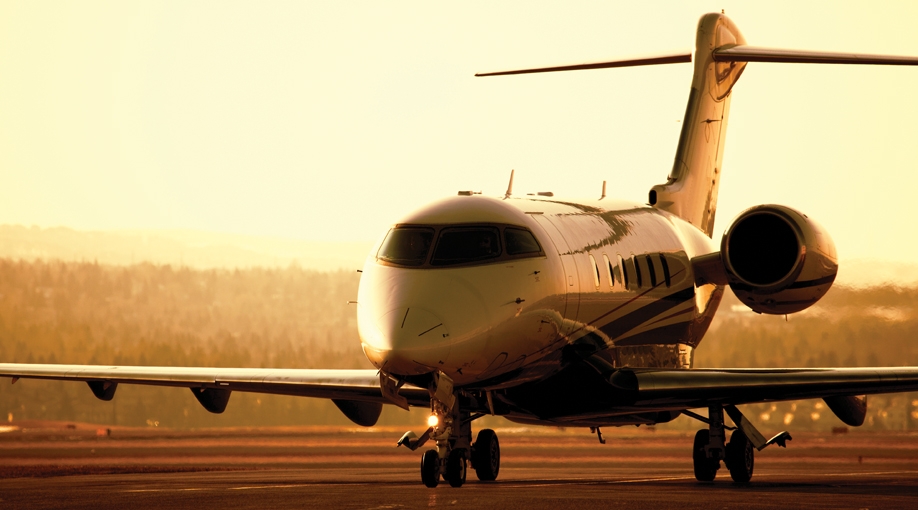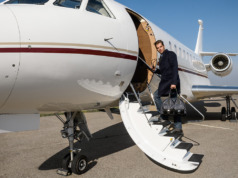
When you’re chartering between 100 and 200 hours annually, the possibility of owning an aircraft starts to make economic sense. On average, an owner flies between 200 and 400 hours a year. Do you project a sustained increase in travel? Is there someone else in the company who can use the aircraft? Has chartering sometimes been inconvenient? If these factors plus increased privacy and security are a concern, you may consider buying a fractional or a whole aircraft.
When your business aircraft travel moves from “occasional” to necessary, use these seven steps to make sound decisions as you buy your first business aircraft
When you’re chartering between 100 and 200 hours annually, the possibility of owning an aircraft starts to make economic sense. On average, an owner flies between 200 and 400 hours a year. Do you project a sustained increase in travel? Is there someone else in the company who can use the aircraft? Has chartering sometimes been inconvenient? If these factors plus increased privacy and security are a concern, you may consider buying a fractional or a whole aircraft. If the latter, here are the first steps to take:
1 Define Your Mission: First, you need to decide the primary purpose for which the aircraft will be used: short solo trips to oversee several facilities in one day, or flying coast-to-coast with key employees? Will your travel be strictly domestic, or international? Will there also be occasional vacation, family, or other personal use?
2 Select An Aircraft: Some of the factors to consider are: average stage length (individual flight segment), the typical number of passengers, annual utilization (the number of hours you plan to fly), at what kind of airport you’ll be based (some aircraft are better than others on short landing fields), your acquisition and operating budgets, as well as your tax situation and appetite for depreciation.
3 Establish Your Budget: For a good late model pre-owned small cabin business jet, such as a Citation CJ3, Phenom 300, or Learjet 45, with a range of 1700-2000 miles, you can expect to spend $3-$8 million and operating costs of $1550 an hour. A midsize jet, like the Hawker 850 or Citation Excel, with a range of 2400-3000 miles, can cost $4-$9 million, with operating costs of $2000-$2500 an hour. A large-cabin, long-range jet such as a Challenger 605, Gulfstream 450, or Falcon 900, will cost upwards of $20 million, and incur operating costs of $2500-$3600 per hour.
4 Select a Broker or Acquisition Consultant: You’ll want someone with an excellent reputation who knows the market as well as the available aircraft. It is to your advantage to pay the broker a flat fee, not a percentage, for this expert advice. To find a reputable consultant or broker, you can ask your friends. Or contact the National Aircraft Resale Association for a roster of members, all of whom subscribe to a strict code of ethics.
5 Prearrange Your Financing: Finding financing can be a challenge, due to changing regulations and the unstable global economy, which has caused lenders and lessors to become more selective as to the assets they will finance. While your banker or existing lines of credit may be helpful, aviation-specific financiers know the market and aircraft values, and can help you structure the optimal finance package.
6 Secure the Services of a Good Aviation Lawyer: Acquisition contracts, especially pre-owned acquisition, require a specialized knowledge of the industry. For example, an airplane consists of three major systems: the airframe, the engines, and the avionics. The purchase contract must specify the equipment list, the engines by serial number, and any spare parts like extra wheels and maintenance equipment. Only an attorney with aircraft acquisition experience will make sure that the purchase contract protects your rights as a buyer.
7 Hire a Management Company: Unless you have the in-house knowledge and expertise to manage the myriad of details to operate the aircraft safely, effectively, and according to rapidly-changing state, federal, and international regulations, then you will want a reputable management company to help put your airplane in service almost immediately. In addition to providing safety and regulatory oversight, the management company will help you to: hire a crew and maintenance technician, buy insurance, take advantage of its fleet purchasing power, and secure a hangar at your local airport. If your airplane is underutilized, the management company can make it available for charter when you’re not using it, to offset your cost of operation.
Purchasing an aircraft is a major capital investment, requiring the same due diligence and planning as any significant long-term investment. Using these seven steps as a guide can help you make the best possible decisions as you acquire your new asset. BAA
Business Aviation Advisor's content is presented by experts in all aspects of aircraft management: professionals knowledgeable in operations, legal and regulatory issues, insurance, aircraft finance, human resources, aviation real estate, charter and charter brokers, safety management providers and auditors, and third-party as well as owner aircraft management. These authorities provide Business Aviation Advisor readers with the most current and pertinent information they need to make the most effective and informed decisions about their business aviation investments.




